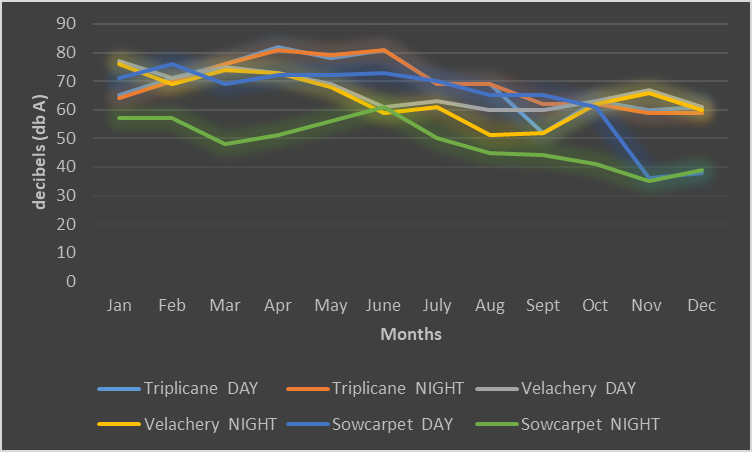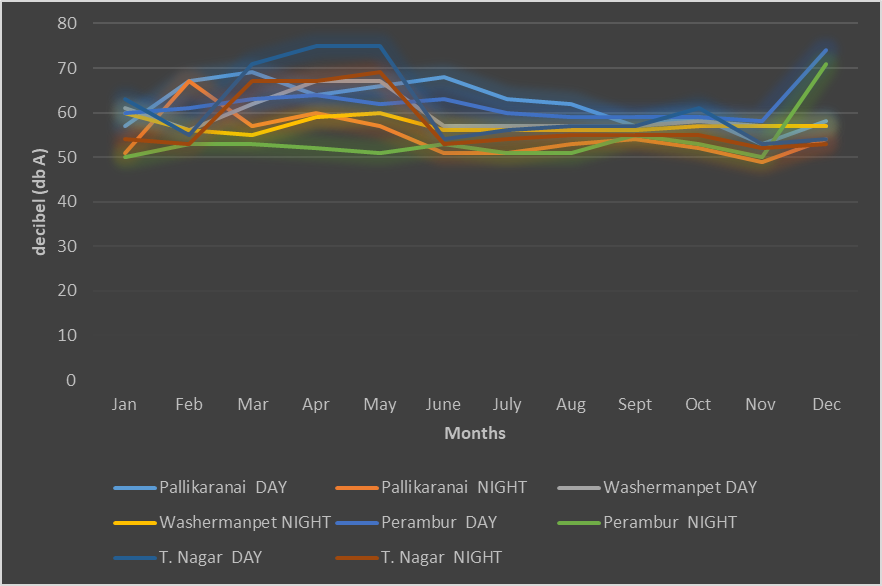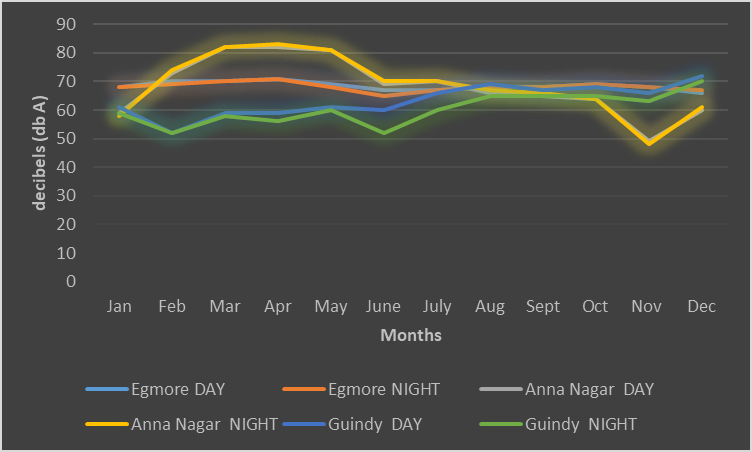The other day, cycling home from work, a two-wheeler came up behind me on the left and honked several times. She then overtook me on the left and as she did, I felt compelled to ask why she had honked. (Since the traffic was heavy and it was not a wide road, we were all crawling along.) Her response was that she was warning me! Of what I still don’t know. At one level that response could be read as aggression - “I am warning you, get out of the way, or else…” or it could be meant to inform me that she exists. Either way there was no need to honk. She being on a noisy two-wheeler, I was well aware of her presence behind me. As for getting out of her way, the rules don’t require me to do any such thing. All she had to do was move to my right and I would have been able to move to the left and if there was space, she could have gone past me legally on the right side.
These days it seems like honking has replaced the need for rules. The general consensus is that if I honk, it gives me carte blanche to drive as I like. I can continue to speed, to drive poorly, and break all road rules. No wonder our roads are a cacophony of horns.
To honk or not to honk?
The Motor Vehicles Amendment Act (MVAA), 2019, in Section 194F, puts the penalty for continuous/needless honking or honking in a no-honking zone at Rs 1000 for the first offence, and Rs 2000 for subsequent offences But it does not define what is continuous or needless honking.
There are actually very few situations where the horn is needed. Sometimes on winding roads with poor visibility, you may need to honk to alert other road users of your presence, especially if you are on a blind curve. Even here just a gentle tap of the horn should suffice. And finally if another vehicle is coming into your space and a collision is imminent, it's a good time to honk to let them know they need to get their vehicle under control. A similar situation would be on a slope when the vehicle in front starts to roll back and is about to bump into you. You could, perhaps, honk (gently and just once) if the lights have changed to green and even after several seconds, the vehicle in front hasn’t moved. If you are 10 cars deep in the traffic then of course you cannot expect to move as soon as the light turns green!
Curbing our urge to honk
Other than the Motor Vehicles Amendment Act, 2019, the other legislation that is relevant is the Noise Pollution (Regulation and Control) Rules, 2000 under the Environment Protection Act, 1986. These lay out the acceptable noise levels for different areas - residential, industrial, commercial, and educational/hospital. The Rules gives state governments the power to declare areas of at least 100m around hospitals, educational institutes, and courts as silent zones; requires prior permission for use of loud speakers/ public address systems; and bans use of loud speakers/public address systems from being used at night (except in a closed space) unless specifically allowed by the state government.
According to the Rules, the noise level at the boundary of the public place, where a loudspeaker or public address system or any other noise source is being used shall not exceed 10 dB (A) above the ambient noise standards for the area or 75 dB (A) whichever is lower; (5) The peripheral noise level of a privately owned sound system or a sound producing instrument shall not, at the boundary of the private place, exceed by more than 5dB (A) the ambient noise standards specified for the area on which it is used.
The ambient noise standards are also spelt out (see table below).
| ZONE | LIMITS (in dB (A)) | |
| Day time (6 am to 9 pm) | Night time (9 pm to 6 am) | |
| Industrial | 75 | 70 |
| Commercial | 65 | 55 |
| Residential | 55 | 45 |
| Silence | 50 | 40 |
Source: Standard for noise pollution, PIB press release dt 22.11.10
Unfortunately, these are rarely followed or implemented. Even signage (No Horn) near hospitals, educational institutes are lacking. While there are media reports of motorists being fined for honking, these do not seem to be very common. In addition, it is impossible for the Police to catch every offender every time. A while back a video was doing the rounds of the Mumbai police’s attempt to bring home the point on honking unnecessarily. At the traffic lights, if people began honking before the light turned green and the decibel level went above a certain limit, the light stayed red for another minute and half. After a few times, people began getting the point. While this was a nice exercise, the Police cannot of course do this all the time. It should serve as a reminder for road users to be more responsible in their honking.
Illegal noise
Over the years the courts have also issued orders to curb noise levels. Recently the Bhopal branch of the National Green Tribunal (NGT) directed the Rajasthan government to take action on pressure horns and the excessive honking by motor vehicles, as per the rules. The NGT also noted that the fine as per the law is now Rs 10,000 and called upon automobile manufacturers to provide information on sound levels of the vehicle as well as proof that the vehicle adheres to norms, when selling the automobile. In the same case, the NGT also linked noise pollution as a violation of Article 21 (Right to Life).
A constant din
Research shows that prolonged exposure to high levels of noise does negatively impact hearing. Studies on occupational noise (in factories and even among traffic police) has shown permanent deterioration in hearing. For most road users, the exposure to noise is not as constant as in the above situations. However, some studies show that exposure to high levels of traffic noise (a 24 hour average of above 70 dB) could have an impact on hearing. A 2019 report by MoveInSync claims that Indians on average spend 2 hours a day on the road. Considering the way people drive, and our love for honking, one can imagine that a large portion of these 2 hours is spent being bombarded by horns (not to mention engines without silencers/mufflers). Maybe we need more research to establish if even the 2 hours or so of high levels of noise exposure is slowing wearing away Indians’ hearing?
Research has also shown that high noise levels, loud, sudden noises affect mental health, child mental development, and stresses pregnant women. Even for the rest of us, it is not a situation conducive to good health and peace of mind. The World Health Organization (WHO) estimates that environmental noise (mostly related to road traffic noise) adds an additional burden to different diseases. This burden is calculated in terms of disability-adjusted life-years (DALYs). WHO says in western Europe, that DALYs loss from environmental noise are 61,000 years for ischaemic heart disease, 45,000 years for cognitive impairment of children, 903,000 years for sleep disturbance, and 22,000 years for tinnitus. In short, at least one million healthy life years are lost annually from traffic-related noise in western Europe. Considering that traffic noise in western Europe is far less than India, one can only imagine the impact of traffic noise on us Indians.
Media reports say that the Central Pollution Control Board’s (CPCB) data for 2019 (published in 2020), notes that Chennai was the noisiest city in the country. Irrespective of how Chennai compares with other cities, the data shows that noise levels are above permissible limits. In the four commercial areas (Perambur, Pallikaranai, Washermanpet, and T. Nagar), the noise levels in 2021 were by and large above the standard (65 in daytime and 55 at night time).

Fig 1: Monthly average noise levels in commercial areas in Chennai in 2021 (source CPCB)
In residential areas the limit is 55 and 45 db A respectively for day and night time. Again most areas recorded above accepted levels of noise except for Sowcarpet.

Fig 2: Monthly average noise levels in residential areas in Chennai in 2021 (source CPCB)
In silent zones (Egmore and Anna Nagar in the graph below) the standard is 50 and 40 respectively for day and night. Except for one month when Anna Nagar’s noise dipped below 50 db A, throughout the year both locations recorded above permissible levels of noise. Guindy is an industrial area where the permissible level is 75 and 70 db A for daytime and nighttime respectively. The industrial area seems to have stayed within the limits for the year.

Fig 3: Monthly average noise levels in silent and industrial areas in Chennai in 2021 (source CPCB)
Being subjected to constant honking, causes most people to just ignore it. It becomes just noise. So when there is an actual need to honk, and someone honks, we still ignore it because everyone is honking, all the time. This does not help our safety on the road. Add this to the mental stress, loss of hearing and other impacts of environmental noise pollution, it is a wonder that we are still functioning, sentient beings.
Perhaps it is time to say Horn not ok please!
Add new comment